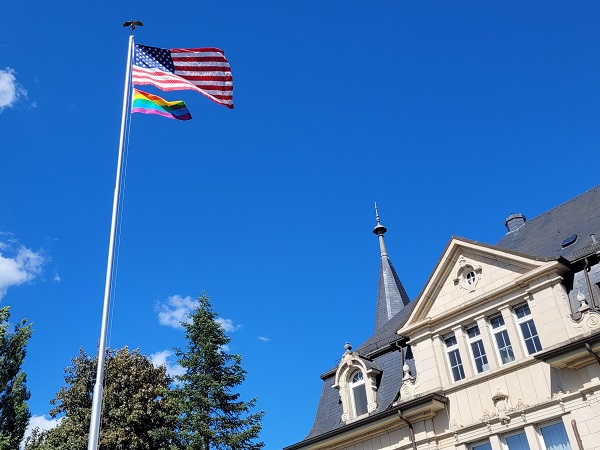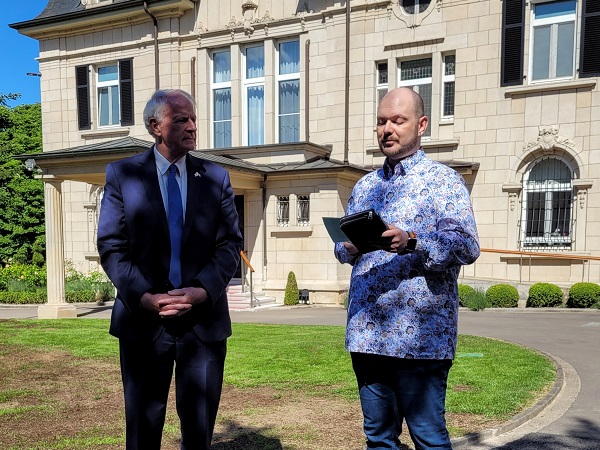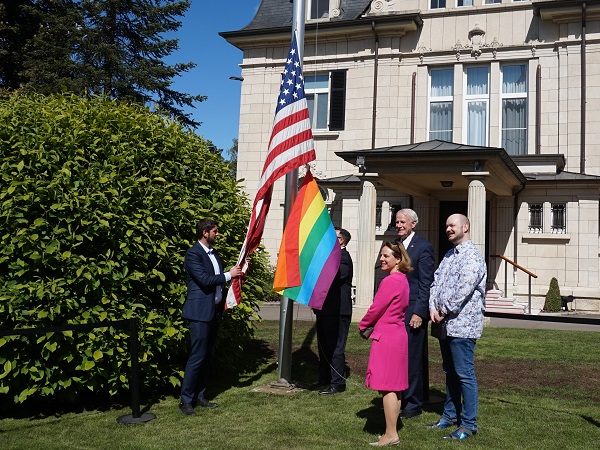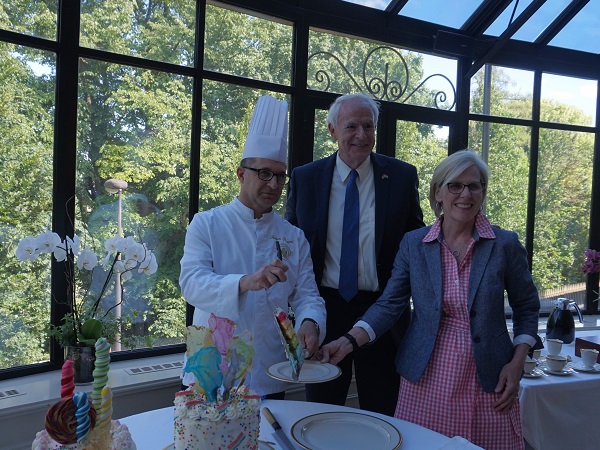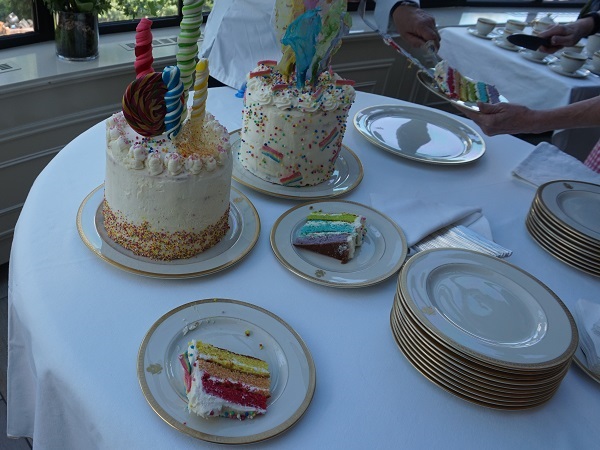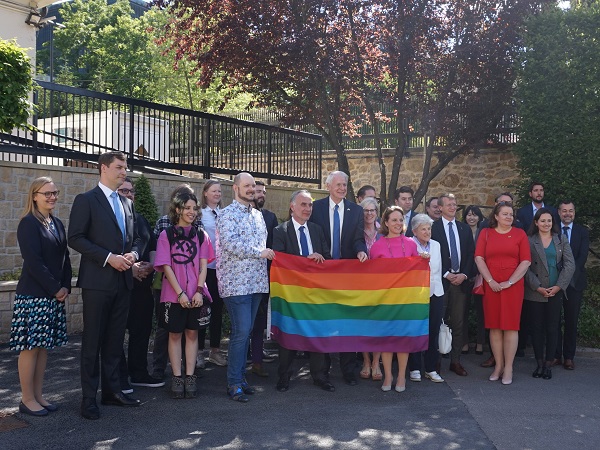 Credit: Jazmin Campbell
Credit: Jazmin Campbell
On Wednesday afternoon, the US Embassy in Luxembourg held a rainbow flag raising ceremony to mark the start of Pride Month in the United States.
In attendance were representatives of the Luxembourg government, namely Corinne Cahen, the Minister for Family Affairs, Integration and the Greater Region, members of Luxembourg’s LGBTQI+ civil society organisations, such as Rosa Lëtzebuerg asbl and Centre LGBTIQ+ CIGALE, several ambassadors (representing the US, the United Kingdom, the Netherlands and Belgium, among others) and members of the press. Belgian architect Gauthier Destenay, who is the husband of Luxembourg's current Prime Minister, and former Luxembourg government minister and fencer Colette Flesch were also present.
The US Ambassador to Luxembourg, Thomas “Tom” Barrett, noted that this was the largest group to have gathered at the US Embassy in Luxembourg since before the COVID-19 pandemic. He expressed his joy at being able to host this event as Pride Month kicks off in the US. Looking back at the history of Pride Month, Ambassador Barrett recalled that it commemorates the Stonewall riots of June 1969 which came in response to the “failure of society to accept people as they are”. He lamented that today there are still about 70 countries worldwide that criminalise LGBTQI+ people.
Above all, the US Ambassador stressed the need to support and respect one another, and to understand that ultimately “all of us want to love and to be loved” and to “be who we are”. He expressed pride in having a President (Joe Biden) who has believed in this message throughout his career.
Ambassador Barett also noted that the US Embassy in Luxembourg was the first foreign mission to fly the rainbow flag in the Grand Duchy back in June 2015. He added that he was proud to be able to serve in the same place where the late James Hormel, the first openly gay man to represent the US as an ambassador (1999-2001), had served before him, under then President Bill Clinton.
For her part, Minister Cahen said that she was happy that such gatherings could happen again after two years of the COVID-19 pandemic. She agreed with the US Ambassador’s statement about love and being able to “live as we want to live”. She also emphasised the importance of freedom and peace for all, noting that Luxembourg generally performs well when it comes to LGBTIQ+ rights, although the country is trying to do even better – perhaps even coming first one day in rankings such as the Rainbow Europe index (Luxembourg placed 5th in the latest edition). Minister Cahen stressed that “Luxembourg wants to be an example for the rest of the world”, also when it comes to freedom and people being able to love who they want.
Tom Hecker, President of Rosa Lëtzebuerg, the oldest organisation in the Grand Duchy committed to fighting for the rights of the local LGBTIQ+ community, went on to present the history and the significance of the rainbow flag. He explained how the very first rainbow flag for the LGBTIQ+ community was designed by Gilbert Baker in 1978 at the request of activist Harvey Milk. Citing the famous words of Mr Baker, he stated: “A true flag is not something you can really design. A true flag is torn from the soul of the people”. The rainbow flag originally had eight colours, although pink and turquoise were later removed for production purposes. Each colour has a specific meaning: red represents life, orange stands for healing, yellow is representative of sunlight, green of nature, blue represents harmony / peace and purple symbolises spirit; pink stood for sexuality whilst turquoise represented art / magic.
Recalling that the rainbow flag “stands for unity”, Tom Hecker noted that current times had revealed the need to “show our fellow human beings that we can work together for a better place”. He expressed his gratitude for “such a unifying flag”. Rosa Lëtzebuerg’s President added that this year’s Luxembourg Pride Week (1-10 July) will take place for the first time directly after Pride Month. Various events are planned within the Esch2022 – European Capital of Culture programme.
The flag raising was followed by a reception, which included a rainbow layer cake.

